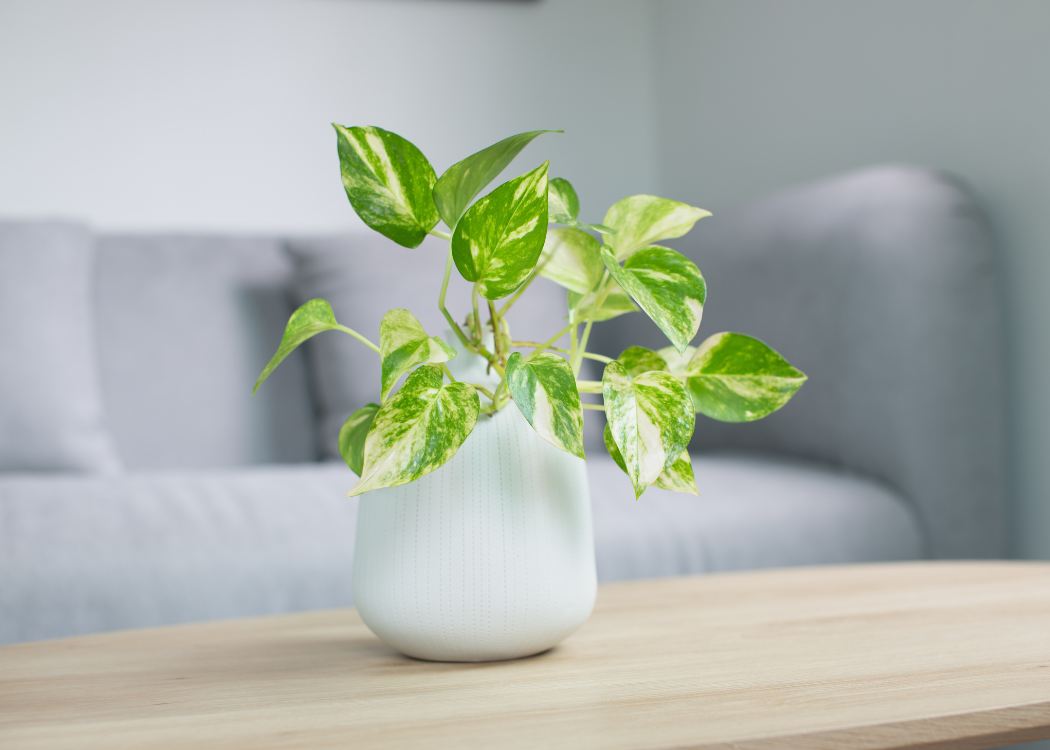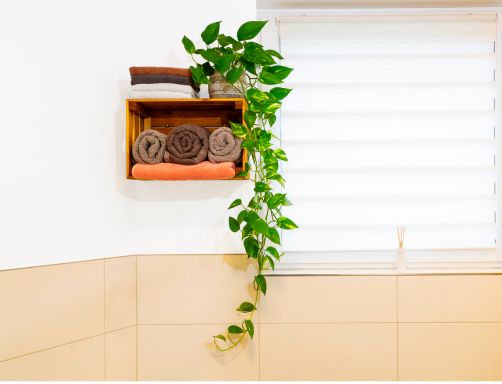Golden Pothos Care
Unlock the Art of Golden Pothos Care: Discover the tropical elegance of Golden Pothos plants and their adaptability to diverse conditions. Learn about light, soil, watering, temperature, and more for nurturing these stunning houseplants. Elevate your indoor space with the timeless beauty of Golden Pothos. Rosies & Posies - Your Guide to Golden Pothos Care

A Guide to Golden Pothos Care
Discover the Tropical Elegance of Golden Pothos
Hailing from the Solomon Islands in the South Pacific, the Golden Pothos (Epipremnum aureum) is a tropical vine that has captured hearts worldwide, often cascading gracefully from shelves and desks. Commonly adorning indoor spaces, this houseplant showcases heart-shaped green leaves that can be adorned with striking white, yellow, or pale green streaks.
Pothos plants exhibit remarkable resilience and longevity with simple care routines, flourishing under diverse conditions of light, soil, and moisture. Even when cultivated indoors, these fast-growing wonders can stretch by 12 to 18 inches each month. However, it's essential to note that Golden Pothos plants are toxic to pets.
Pothos plants generally grace indoor spaces for five to 10 years, but meticulous care can extend their life even further. Providing the right environment and basic care can significantly enhance their enduring presence in your living spaces.
Golden Pothos Light Needs
Pothos revels in both sun and shade, but moderation is key. When placed indoors, it prefers bright yet indirect light. Watch out for variegated varieties, as insufficient light may cause them to revert to all-green foliage. Shifting to brighter locations typically reinstates their captivating patterns. Overexposure to direct sun results in pale, distressed leaves.
Grounded in the Right Soil
Pothos thrives in regular, well-draining potting soil, which can lean toward the dry side or even have a rocky texture. It prospers within a soil pH range of 6.1 to 6.8, showcasing its adaptability across a spectrum from neutral to slightly acidic conditions.
How Often to Water Golden Pothos?
Strike a balance in watering by allowing the soil of your Golden Pothos plant to completely dry out between waterings. Prolonged dampness leads to root rot, while black spots or sudden plant collapse indicate excessive moisture. The plant communicates its hydration needs by drooping, but don't wait until the leaves shrink. Brown edges signify prolonged dryness.
Temperature and Humidity for Golden Pothos

Maintain Pothos in environments above 50 degrees Fahrenheit, favoring temperatures between 65 and 75 degrees. The lush foliage of Pothos thrives in high humidity, yet it displays remarkable resilience even in low-humidity conditions. To elevate humidity, place the plant in naturally humid spots like bathrooms or cluster it with other tropical companions to create a microclimate of moisture.
Fertilizing Golden Pothos
While Pothos isn't an excessive feeder, occasional fertilizing during the growth season is beneficial. Administer balanced houseplant fertilizer monthly during spring and summer, but abstain from feeding during the plant's dormant winter phase.
Repotting Golden Pothos
As your pothos matures, it may outgrow its current pot, leading to symptoms like drooping leaves despite proper watering. These signs could indicate a root-bound situation where growth space is limited. Observe roots escaping from drainage holes or carefully examine root health by gently lifting the plant from its container.
When your pothos becomes root-bound, a larger container is essential. Choose a pot that's one or two sizes bigger in diameter and depth. Employ fresh potting soil, watering generously after repotting to aid in recovery. Spring or summer, when the plant is in active growth, is the ideal time for this process.
Pothos thrives in various pot types—plastic, ceramic, metal, or terra cotta—as long as drainage holes are present. Ensure the pot is only slightly larger than the plant's root ball. Guard against water accumulation by monitoring drip trays and saucers. For low-light areas, consider using a terra cotta pot to regulate moisture levels and prevent overwatering.
With its elegant trailing vines, pothos is suitable for hanging baskets and macrame planters. Alternatively, you can cultivate pothos in water, provided the container is nonporous and waterproof, offering creative presentation possibilities.
How to Propagate Golden Pothos
Procuring a mature pothos is simple, but propagating your own from stem cuttings is equally easy. Kickstart the process in water by adhering to these steps:
First, select a healthy stem with at least three leaves using a sterile cutting tool, making a diagonal cut below the lowest leaf. Then, eliminate the lowest leaf from the stem, leaving the rest untouched. Submerge the stem in a jar or vase of water, ensuring the leaves don't touch the water. Once the cutting sprouts several-inch-long roots, typically over a few weeks, transfer it into a pot with potting soil to foster a robust root system. Finally, place the pot in a well-lit spot with indirect sunlight, maintaining moist but not soggy soil.
Are you ready to embrace the beauty and versatility of pothos in your indoor space? At Rosies & Posies, you can find your golden pothos and other houseplants to elevate your home decor. Our experts are here to guide you through the world of plant care, ensuring your pothos thrives and graces your surroundings with its elegance.
Conveniently located in Santa Clara County, we extend our services with a reliable delivery option, bringing the allure of indoor greenery right to your doorstep. Come explore our collection and find your ideal pothos companion today!
Recent Posts
Year : 2024
Year : 2023
Year : 2021
Year : 2020

